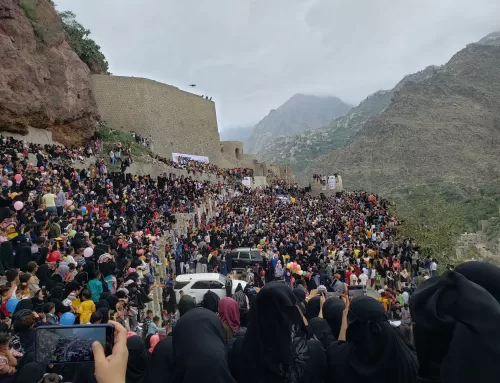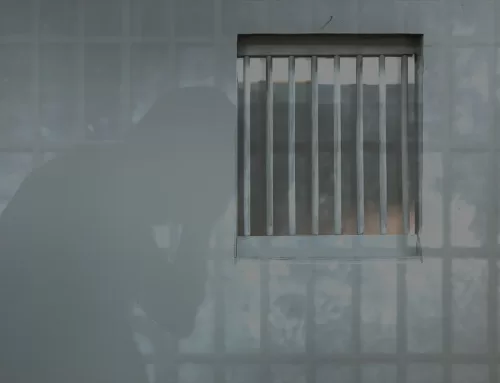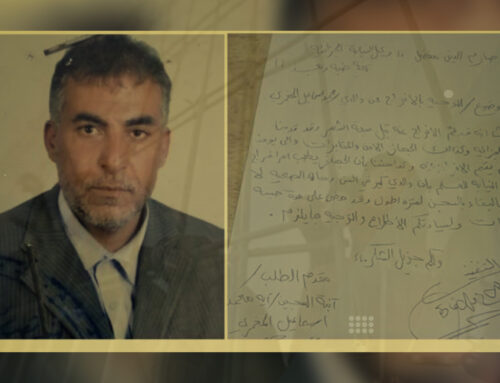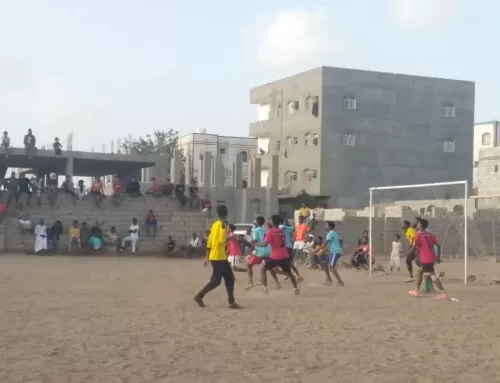November 19, 2019
Ali Abdullah, researcher in Mwatana for Human Rights
Detainees and people forcibly disappeared by the conflicting parties in Yemen are subjected to different kinds of violations. In the darkness of the prisons where they languish, nothing helps them persevere except for the hope of emancipation and liberation. Then, suddenly, this hope might be taken away from them, and they find themselves in a direct confrontation with death coming from the sky, a death that they confront while their ankles are shackled and they do not have the ability to escape and survive.
This is what actually happened on the night of Saturday, August 31, 2019, at about 11:45 pm, Sana’a time, when Saudi/UAE-led coalition fighter jets dropped bombs on an Ansar Allah (Houthis) detention center at the northern end of Dhamar (south of the capital Sana’a), where approximately 170 detainees were held and crammed into a small two-story building, killing most of them. Dhamar Community College had been turned into a place of detention since 2015.
That night, the air strike killed at least 96 people, including seven children and wounded at least 40 people. Their bodies were torn to shreds that covered the whole courtyard of the Community College and their blood was mixed with the cement and stones. This horrific attack was an additional testimony to the high cost paid by Yemenis protected by international humanitarian law in this armed conflict.
I went behind the targeted building to see a cell that was partially destroyed, and I wish I hadn’t gone. It was a room full of torn bodies, and in one corner of the cell where the fire was set ablaze, some bodies were burned and a strong grilling smell made me dizzy.
The next morning, I was participating in a Mwatana mission to visit the site of the bloody attack. I inspected the destruction of the Dhamar Community College buildings that were transformed by the Ansar Allah armed group (Houthis) into a place of detention. I saw horrifying, heart-wrenching scenes, bodies shredded and scattered throughout the college yard, while the Yemen Red Crescent Society was trying hard to assemble body parts in plastic bags.
While I was trying to move through the rubble, I went behind the targeted building to see a cell that was partially destroyed, and I wish I hadn’t gone. It was a room full of torn bodies, and in one corner of the cell where the fire was set ablaze, some bodies were burned and a strong grilling smell made me dizzy. The scene immensely pained me and an inner, slow and suffocated whimper came out of me due to the horror of what I saw.
At Dhamar General Hospital, I was looking carefully at a 19-year-old survivor sitting on a bed whose face looked reassured and comforted, as though he had escaped death forever. I spoke to him and he told me: “I felt the wall of the building shake when the first rocket hit. We all gathered at the cell gate, begging them to open the door and then suddenly, I felt nothing. Later, I woke up to the sound feet and voices looking for survivors. I yelled at the top of my lungs that I am here but they couldn’t determine my location. So I told them I was stuck under somebody’s feet.”
This was not the only horrific attack. In 2015, the Dhamar Community College was hit by an air strike, along with several attacks on other detention centers launched by the coalition. On May 21st, 2015, the coalition targeted a building in Jabal Hiran in Dhamar that was used by the Houthi group as a detention center for civilians, including two journalists. On October 29th, 2016, the coalition also bombed Zaidiya prison in Al-Hudaydah governorate and on December 13th, 2017, it launched an attack on a detention center in the Military Police headquarters in Sana’a.
In 2018 alone, Mwatana documented 150 coalition airstrikes in 11 Yemeni governorates that killed at least 375 civilians, including 165 children, and injured 427 civilians, including 172 children. In the same year, Mwatana documented at least 132 cases of arbitrary detention and 91 cases of enforced disappearance by Houthis in areas under their control.
During the current conflict, the parties to the war in Yemen; the armed group Ansar Allah (Houthis), the internationally recognized Yemeni government forces, the Saudi/UAE-led coalition, along with the Southern Transitional Council and armed elites (UAE proxy forces) committed arbitrary detentions and enforced disappearances against civilians in areas under their authority. People who are arbitrarily detained and forcibly disappeared are often subjected to further human rights violations such as torture and other cruel, inhuman or degrading treatment. Ansar Allah group (Houthis) transferred to the Community College Prison in Dhamar, a group of detained combatants in 2017, where prisoners were subjected to harsh interrogation sessions during which various methods of torture were used to extract confessions, including: severe beating and deprivation of urination, the use of loudspeakers to make noise preventing sleep, insults and abuse.
At Dhamar Community College, which became an unofficial place of detention in 2015, the freedom of detainees was restricted in the ugliest conditions of detention, as detainees lived in isolation, unable to meet their loved ones, and endured difficult psychological conditions that despaired and fractured them. For those who have been totally deprived of liberty, the life they live makes no sense.
The food was cooked without any regard to hygiene conditions, and beans were often served in large, dirty, water-soaked pots. Had it not been for the fear of dying from starvation, detainees would not have eaten the food. They greatly endured, waiting for a day when they embraced freedom and met their loved ones, but death came unexpectedly.
Another survivor who was injured by the shelling of the Community College spoke to me about his suffering during detention and said with a bitter voice: “Life in prison was an unbearable hell.” According to information obtained by Mwatana, the detention authorities did not care about the cleanliness of the cells, forcing the detainees to coexist with accumulated dirt and waste, and to live in close proximity to dirty, smelly restrooms. The food was cooked without any regard to hygiene conditions, and beans were often served in large, dirty, water-soaked pots. Had it not been for the fear of dying from starvation, detainees would not have eaten the food. They greatly endured, waiting for a day when they embraced freedom and met their loved ones, but death came unexpectedly.
In the first moments after the arrival of the Mwatana team to the Community College in Dhamar, I saw in the middle of the rubble (a booklet) resting on the ground belonging to one of the detainees who wrote an inspirational poem entitled “Patience brother ..”, talking about the relentless determination and unequivocal certainty that dreams aspiring for a better tomorrow in a country that embraces all its children in peace can’t be taken away or stifled.
Shortly after the bloody air strike of the Dhamar Community College Detention Center, the 42 detainees who had survived were released, and to the extent that it was a great joy for the released detainees and their families, as much as a bitter gesture to all those families who had waited for this moment long but no longer possible.






